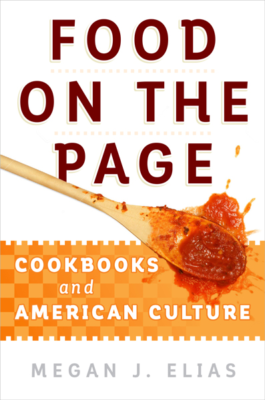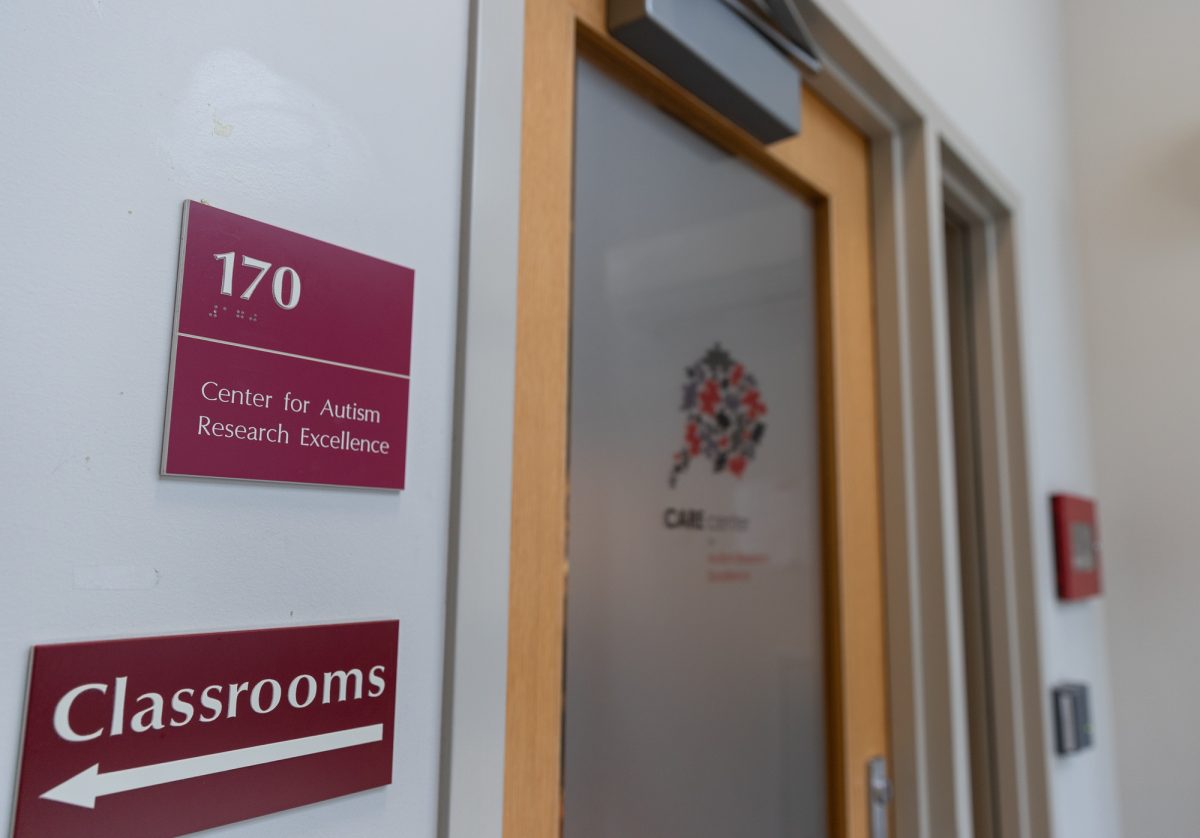
When people read a cookbook, they may not see a cultural artifact — it may be difficult to see how a collection of recipes with little introduction or filler could be part of a greater narrative.
Megan Elias hopes to end these preconceptions about cookbooks with her new book, “Food on the Page: Cookbooks and American Culture.” She spoke at length about her new work on Nov. 8 to a crowd of Boston University students and faculty in the College of Arts and Sciences building.
Elias is a historian and gastronomist who now works as a professor of the practice gastronomy at BU’s Metropolitan College.
“Food on the Page” is her fifth book about food, but her first cookbook. Her prior research on food left her wanting to know more about the history and cultural significance of U.S. cookbooks.
“In research about food ways of the past, I had found that cookbooks had a lot to say that was only indirectly about food,” Elias, a director of gastronomy in MET, said. “I thought that this discourse deserved attention and that writing about it might help to bring recognition to the diversity of purposes that cookbooks have served across time.”
Elias noted during the lecture that in the earlier eras of U.S. cookbooks, the food described was typically more practical than enjoyable.
With far less available ingredients than today, families had to make do with whatever they had. Nevertheless, she pointed to recipes for aesthetically-pleasing cakes as evidence that Americans have always considered eating a convivial experience.
The book delves into various culinary trends that tie into cultural movements. By simply analyzing U.S. cookbooks across different eras and areas, Elias found a narrative Americans’ views towards food.
In her research for the book, Elias discovered that cookbooks contain interesting representations of societal beliefs and preferences in a given era.
“It was a surprise to find that in the early days of ‘slimming’ cookbooks, there were also cookbooks to help people get fatter,” Elias said. “The cultural ideal of physical beauty was shifting but the new direction wasn’t yet set.”
The book also makes some unsettling discoveries about the content of U.S. cookbooks. At her lecture, Elias discussed that some cookbooks were used to promote white supremacy in the 19th century.
According to her, these cookbooks led to the “illusion of southern hospitality.” Elias showed examples of cookbooks that contained explicit racism and racial slurs, including some that described African-American cooking skills as “based in secrecy and magic.”
“It was stomach-turning to read about these books,” said Elias during her presentation.
The book also describes the shift in gender roles as seen through cookbooks. As domestic and professional roles shifted in the 20th century, so too did the way cookbooks marketed themselves.
Some books sought to do away with the stigma around canned foods, which were becoming widely available at this time period. Time-consuming, labor-intensive recipes were increasingly replaced with simpler recipes using these canned items, as more business opportunities for women meant that they had less time for archetypal domestic responsibilities.
In her book, Elias also seeks to take down what she sees as a larger misconception in cuisine — that French food is objectively better than American cuisine. She said she has faced some resistance for this opinion, as when she brought it up during her BU lecture she was met with some murmurs of discontent.
“I gave a talk at a retirement center, for example, they did often say something like ‘well that’s all very nice, but French food really is better than American food and Julia Child really did save us from a long culinary nightmare,’” she said. “It’s my argument that these are constructs rather than objective reality, but I understand that a lifetime of establishing one’s connoisseurship may have more weight for people personally than my argument.”
The book also covers the concept of community cookbooks, collections of recipes from a certain area or social group. These books were an opportunity to discover localized culinary trends.
Elias mentioned that she used some of these books to watch the geographical spread of food trends, as she could trace a new dish’s path from local cookbooks across the country.
Laura Shapiro, a culinary historian and journalist, explained how much one can tell just from reading a cookbook of a certain era.
“Of course cookbooks reflect the class and standing of the writer, but sometimes the writer makes a point of saying she’s not fancy or upper-class, just a regular housewife,” Shapiro wrote in an email. “And many cookbooks are aimed at beginners, or at women with small household budgets.”
“If you read a cookbook carefully and look at everything — style, ingredients, level of skill, tone of voice, publisher, cost, place, etc. … you can certainly learn things,” she added.
William Hamilton, a freshman in CAS, attended the lecture, and he said he believed that it gave him a new perspective on cookbooks in general.
“[The lecture] was really informative,” he said. “We see cookbooks all the time but we never really think about their historical value. I was also surprised about the racism in some of those old cookbooks.”
























































































































